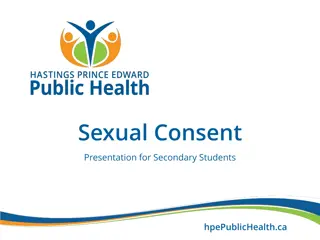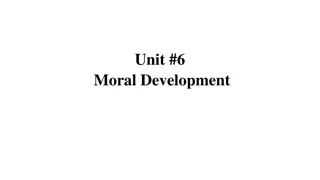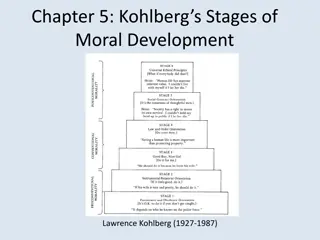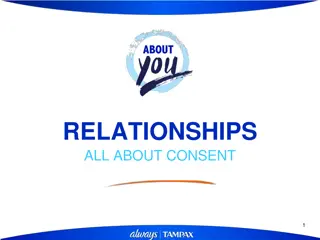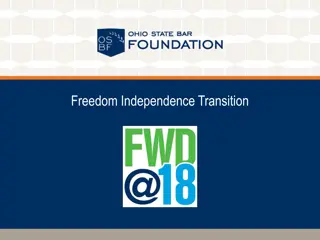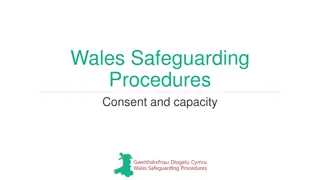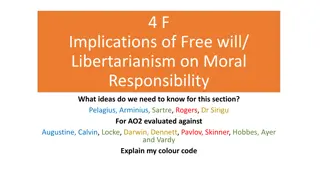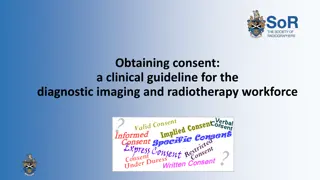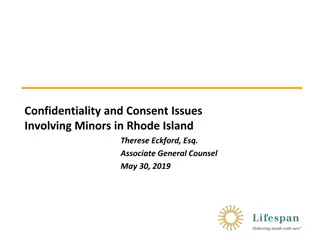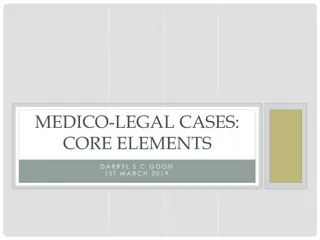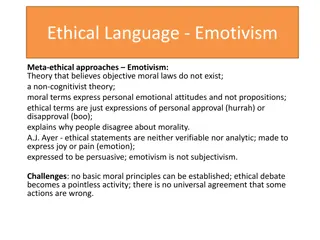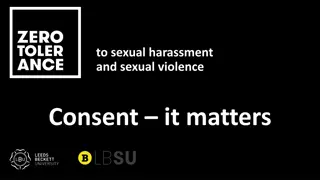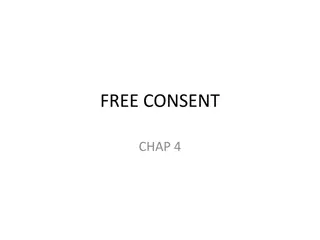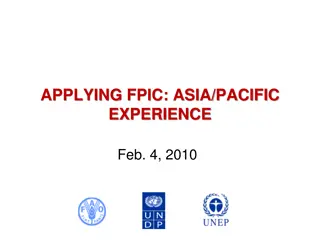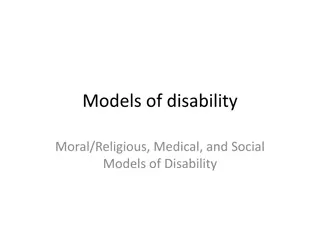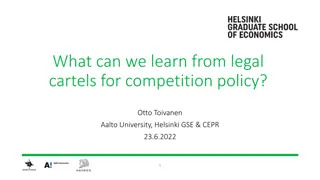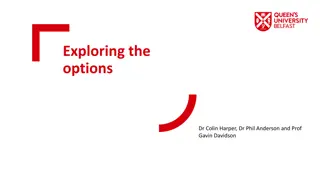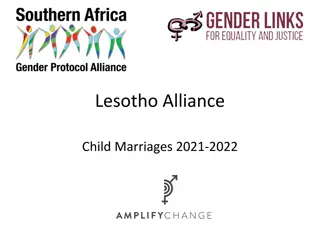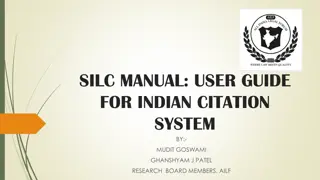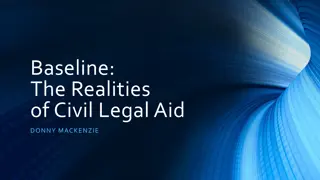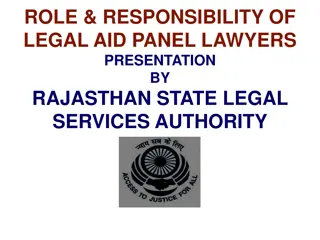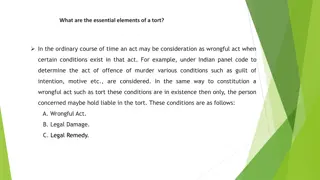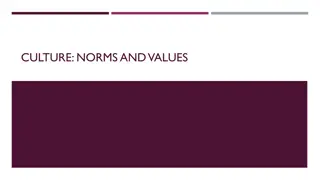Understanding Consent: Legal and Moral Implications
Consent, as explored by Nancy S. Kim, involves a complex interplay of legal and moral consequences. This concept is context-dependent, relational, and incremental, with varying levels of autonomy interests at stake. Kim's work delves into the conditions, limits, and assessment of consent, shedding light on the nuances of valid and invalid consent in different scenarios.
Download Presentation

Please find below an Image/Link to download the presentation.
The content on the website is provided AS IS for your information and personal use only. It may not be sold, licensed, or shared on other websites without obtaining consent from the author. Download presentation by click this link. If you encounter any issues during the download, it is possible that the publisher has removed the file from their server.
E N D
Presentation Transcript
WHAT DOES IT MEAN TO CONSENT? Nancy Kim ProFlowers Distinguished Professor of Law California Western School of Law Visiting Professor of Law Rady School of Management, University of California, San Diego https://www.cwsl.edu/faculty-staff-and-campus-directories/faculty- and-staff-directory/n/nancy-s-kim https://papers.ssrn.com/sol3/cf_dev/AbsByAuth.cfm?per_id=395016
What is consentability? Consentability has 2 meanings: (1) it is possible to consent; and (2) it is legal to engage in the activity. In many situations acts are deemed inconsentable because there is concern that the consent is invalid or defective. But what does that mean? And why do we allow consent to some things and not to others?
What does it mean to Consent? Law views it as conclusion to be reached with moral and legal consequences Reality is more complicated; consent is context-dependent, mutual, relational, and often incremental.
Figure 3-3 - CONSENT CONSTRUCTION /ASSESSING THE CONDITIONS OF CONSENT The Three Conditions of Consent Nancy S. Kim, CONSENTABILITY: CONSENT AND ITS LIMITS (Cambridge University Press, 2019)
Figure 3-4 HIERARCHY OF AUTONOMY INTERESTS Bodily Integrity/Harm to Mind or Body Highest Threat Non-Forceful Physical Compulsion Waiver of Rights Property Restrictions Lower Threat Nancy S. Kim, CONSENTABILITY: CONSENT AND ITS LIMITS (Cambridge University Press, 2019)
Threat level to autonomy depends upon factors Figure 3-5 RELEVANT FACTORS IN ASSESSING THREAT LEVEL TO AUTONOMY Nancy S. Kim, CONSENTABILITY: CONSENT AND ITS LIMITS (Cambridge University Press, 2019)
No Valid Consent Figure 3-6 Figure Showing No Valid Consent Nancy S. Kim, CONSENTABILITY: CONSENT AND ITS LIMITS (Cambridge University Press, 2019)
Valid Consent Figure 3-7 Figure Showing Valid Consent Nancy S. Kim, CONSENTABILITY: CONSENT AND ITS LIMITS (Cambridge University Press, 2019)
Manifestation of Consent but one or both of the other conditions are not sufficiently robust given the level of threat to autonomy. Defective Consent Ineffective
Examples: Contract duress, undue influence, mistake and unconscionability (allow consenter to avoid contract despite manifestation of consent) Criminal severity of crime charge (reckless v. intentional) Tort battery v. duty of care/negligence standard e.g. physician who has failed to obtain consent has committed battery while one who has failed to obtain informed consent is liable under duty of care/negligence Recognition of defective consent in existing law (even if not expressly)
Express recognition of category of defective consent might eliminate confusion over valid or full or meaningful consent categories Would apply where there is a manifestation of consent but one or more of the consent condition is insufficient given the autonomy interest. A finding of defective consent would mean no private ordering regulatory agency or judiciary would determine substantive terms. Defective Consent
Data protection as a fundamental right Applies to processing of personal data (with some exceptions, e.g. for personal activity; for public security) Companies/Organizations in EU or those processing data of EU subjects Consent is one important way (although not the only way) for businesses to comply May be the easiest way for some companies (Exception: employers) Application: GDPR and Consent
consent of the data subject means any freely given, specific, informed and unambiguous indication of the data subject s wishes by which he or she, by a statement or by a clear affirmative action, signifies agreement to the processing of personal data relating to him or her GDPR Article 4(11) - Definitions
1. Where processing is based on consent, the controller shall be able to demonstrate that the data subject has consented to processing of his or her personal data. 2. If the data subject s consent is given in the context of a written declaration which also concerns other matters, the request for consent shall be presented in a manner which is clearly distinguishable from the other matters, in an intelligible and easily accessible form, using clear and plain language. Any part of such a declaration which constitutes an infringement of this Regulation shall not be binding. GDPR Article 7 Conditions for Consent 3. The data subject shall have the right to withdraw his or her consent at any time. The withdrawal of consent shall not affect the lawfulness of processing based on consent before its withdrawal. Prior to giving consent, the data subject shall be informed thereof. It shall be as easy to withdraw as to give consent. 4. When assessing whether consent is freely given, utmost account shall be taken of whether, inter alia, the performance of a contract, including the provision of a service, is conditional on consent to the processing of personal data that is not necessary for the performance of that contract.
Consent should be given by a clear affirmative act establishing a freely given, specific, informed and unambiguous indication of the data subject s agreement to the processing of personal data relating to him or her, such as by a written statement, including by electronic means, or an oral statement. This could include ticking a box when visiting an internet website, choosing technical settings for information society services or another statement or conduct which clearly indicates in this context the data subject s acceptance of the proposed processing of his or her personal data. Silence, pre-ticked boxes or inactivity should not therefore constitute consent. Consent should cover all processing activities carried out for the same purpose or purposes. When the processing has multiple purposes, consent should be given for all of them. If the data subject s consent is to be given following a request by electronic means, the request must be clear, concise and not unnecessarily disruptive to the use of the service for which it is provided. GDPR - Recital Recital 32 32 Conditions for Conditions for consent consent
MANIFESTATION OF CONSENT CONDITION STATEMENT OR CLEAR AFFIRMATIVE ACTION SPECIFIC Request for consent must be presented in a manner clearly distinguishable from the other matters; should be clear what data processing activities company intends to carry out, giving the subject opportunity to consent to each activity. Cannot explain uses as part of a single long paragraph with a single consent checkbox at the end. UNAMBIGUOUS silence does not count, neither do pre-ticked boxes or inactivity How do GDRP requirements reflect understanding of consent?
VOLUNTARINESS CONDITION FREELY GIVEN - Cannot require consent as condition of service; Subject has to be able to say No. Recital 42: Consent should not be regarded as freely given if the data subject has no genuine or free choice or is unable to refuse or withdraw consent without detriment. Exception: if need data to provide service, such as credit card info to process transaction. CONSENT CAN BE REVOKED and should be just as easy as obtaining consent. How do GDRP requirements reflect understanding of consent?
KNOWLEDGE CONDITION INFORMED Intelligible and easily accessible form if written; subject must know your identity, what data processing activities you intend to conduct, purpose of the data processing, and that subject can withdraw consent at any time. Must also be described in plain language ( clean and plain language ) How do GDRP requirements reflect understanding of consent?
Google fined $57M (50Euros) for failing to give enough information to users on data consent policies and failing to give enough control over how information is used. Employers should look to other lawful means (e.g. for performance of contract, compliance, legitimate interests) and not consent because of imbalance in relationship E.g. Greece s data protection authority fined PWC for breaches in processing of employee data b/c due to bargaining imbalance, consent could not be freely given. GDPR compliance problems/defective consent
Remember: Consent is necessary for Contract but Consent Contract Consent can be revoked unless parties have entered a Contract A contract needs more than consent A contract cannot be revoked (with some exceptions) The Relationship of Consent to Contract
Under the GDPR, consent to processing of personal data is treated as separate from the contract for the underlying service. Therefore, consent may be withdrawn unless it is fundamental to the contract. e.g. Processing shall be lawful only if and to the extent that at least one of the following applies processing is necessary for the performance of a contract to which the data subject is party or in order to take steps at the request of the data subject prior to entering into a contract (Art. 6 (1)(b)) e.g.: When assessing whether consent is freely given, utmost account shall be taken of whether, inter alia, the performance of a contract, including the provision of a service, is conditional on consent to the processing of personal data that is not necessary for the performance of that contract. (Art. 7 (4)). e.g. Consent should not be regarded as freely given if the data subject has no genuine or free choice or is unable to refuse or withdraw consent without detriment. (Recital 42) e.g. Consent is presumed not to be freely given if it does not allow separate consent to be given to different personal data processing operations despite it being appropriate in the individual case, or if the performance of a contract, including the provision of a service, is dependent on the consent despite such consent not being necessary for such performance. (Recital 43). Under GDPR, consent contract
nsk@cwsl.edu https://www.cwsl.edu/faculty-staff-and- campus-directories/faculty-and-staff- directory/n/nancy-s-kim https://papers.ssrn.com/sol3/cf_dev/AbsByAut h.cfm?per_id=395016 Questions?
CONSENTABILIY FRAMEWORK What does it mean to consent? [Relative Consent Fig. 3-3] Is it possible to validly consent to the proposed activity? How to differentiate proposed activities? Does the validity of consent depend on the proposed activity? (Yes) [(Valid) Consent as a Sliding Scale Figs. 3-6 & 3-7] Should a proposed activity be consentable? [Hierarchy of Autonomy Interests & Level of Threat Figs. 3-4 & 3-5] Are social harms caused by the proposed activity What are the social consequences of the proposed activity? outweighed by its social benefits? [Empirical Data Required to Answer] What type of social consequences merit constraining consent? [The Limits of Consent: Societal/Collective v. Individual Interests Figs. 3-1, 3-2, Fig. 3-4] Nancy S. Kim, CONSENTABILITY: CONSENT AND ITS LIMITS (Cambridge University Press, 2019)
Figure 3-4 HIERARCHY OF AUTONOMY INTERESTS Bodily Integrity/Harm to Mind or Body Highest Threat Non-Forceful Physical Compulsion Waiver of Rights Property Restrictions Lower Threat Nancy S. Kim, CONSENTABILITY: CONSENT AND ITS LIMITS (Cambridge University Press, 2019)
Figure 3-5 RELEVANT FACTORS IN ASSESSING THREAT LEVEL TO AUTONOMY Nancy S. Kim, CONSENTABILITY: CONSENT AND ITS LIMITS (Cambridge University Press, 2019)
Questions from chat window John M: what evidence must be captured and what forms are accepted, to prove that consent has been properly achieved? Digital signature required? Answer: in current case law re: online contracts in US, courts are requiring screen shots of web flows, in order to show knowledge condition , and not just accepting the evidence of the click. Ie. They re requiring evidence of the user flow prior to the click. Expect more requirement of record-keeping. E.g. recent amazon case: if you can show 30 instances of the user accessing the site What kinds of evidence will be acceptable? Will access analytics be sufficient? Yes with a combination of representative screens that match those access dates. Lisa: won t this have an unintended consequence of less online anonymity and more identification? Will SSI help counter/mitigate this? Hope so. When will we get proof that Consent Receipt is adequate? In US law, they ll accept Notice of being bound under terms. Need Constructive Notice or Actual Notice: If the user gets actual notice such as an email, that satisfies and is in fact stronger.
John W: The Biggest Lie on the Internet: Ignoring the Privacy Policies and Terms of Service Policies of Social Networking Services https://papers.ssrn.com/sol3/papers.cfm?abstract_id=2757465
Questions from chat window Ken: Nancy, can you talk about the abuse of the [GDPR] legitimate interest option to avoid consent? E.g. kantara uses legitimate interest vs. consent. Role of Student Is it correct to valorize consent over other forms of [GDPR] authority for personal data processing?
Questions from chat window John W: ? With respect to balancing the threat to autonomy, how do you define that in a more collective sense. i.e. Social harms or impacts and the chilling effect.
Questions contd John W: From an IT/Architecture case it appears that the notion of notice and consent was a way to relinguish control over personal information under the terms set out in the notice. That makes architectural sense for a single entity with a single database for a defined purpose. Doesn't make sense in a back-end API connected world is this a case where there is no consentablity
Questions contd John W: ? Communications Privacy Management theory [i.e. how consentability relates]
Questions contd John W: ? Contextual framing problem with notice/consent
Questions contd James A: Question: Is it fair to say that consent is NOT dead. We as a society simply need better ways to manage it, and supporting decisions by authorities and courts?
Questions contd Mary H: Nancy: Do you think that legal regimes should then limit what can be done.. the same way that there are rights you cannot give away in other areas. For example, you cannot consent to sell your own organs? How would something like that work.. in conjunction with a consent system
Questions contd Lisa: Do you expect more litigation re: defective consent?
Questions contd Lisa: Do you expect more litigation re: defective consent?
Questions contd Lisa: Is there reason for optimism re: the recent judgements against Google and PCW? Ie. As legal precedent?


